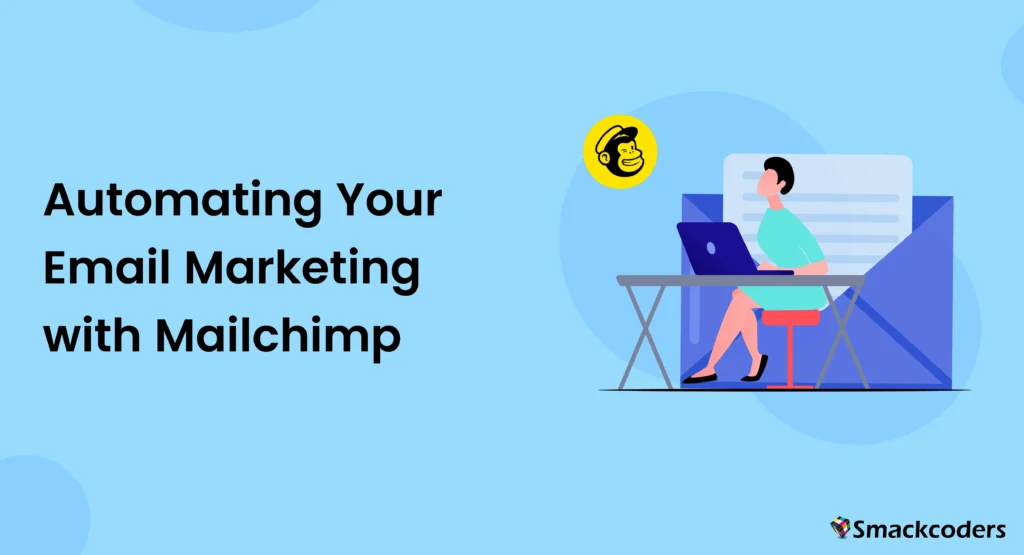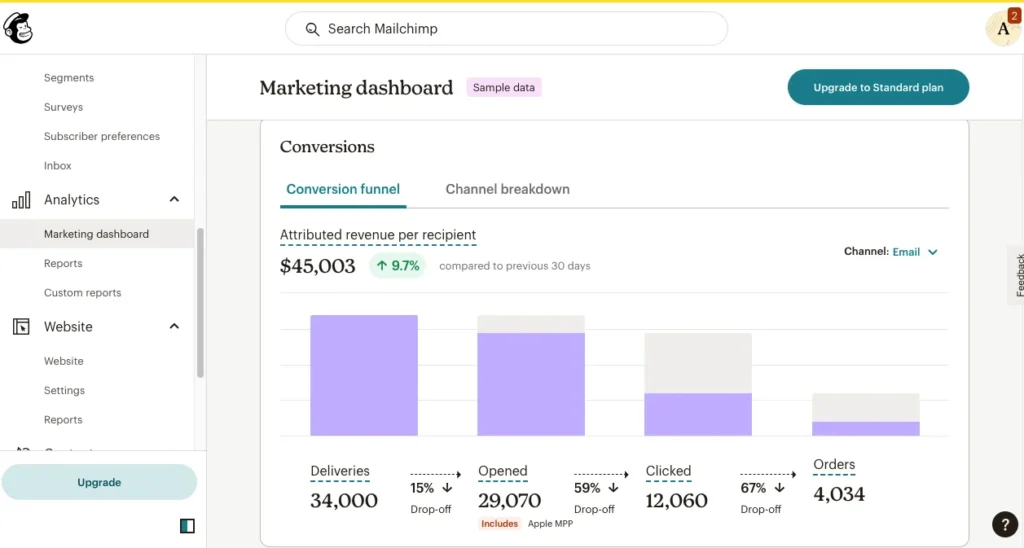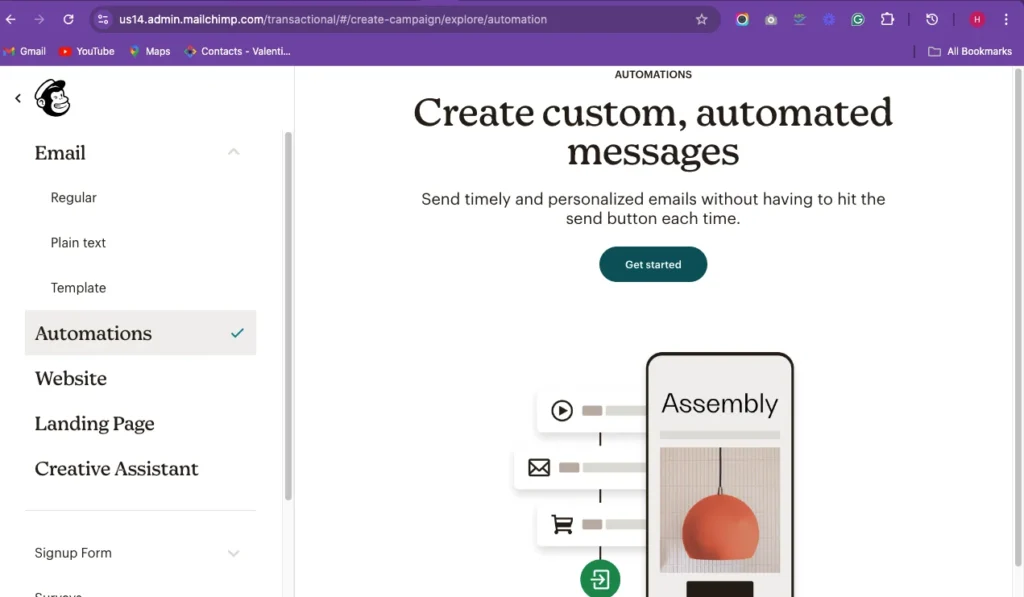
Table of Contents
Introduction to Mailchimp Automation
Email marketing is a powerful tool for businesses of all sizes, and Mailchimp stands out as a leading platform for managing these efforts. By leveraging Mailchimp’s automation features, businesses can streamline their email marketing processes, saving time and improving efficiency. This guide will walk you through everything you need to know about automating your email marketing with Mailchimp.
What is Mailchimp?
Mailchimp is an all-in-one marketing platform that helps businesses manage their email campaigns, social media advertising, and more. Known for its user-friendly interface and robust features, Mailchimp is particularly popular among small to medium-sized businesses. Its flexibility and comprehensive toolkit allow for the creation of sophisticated email marketing strategies without the need for extensive technical knowledge.
Benefits of Email Marketing Automation
Automating your email marketing can bring numerous benefits, including:
- Time Savings: Automation reduces the need for manual intervention, freeing up time for other strategic tasks.
- Consistency: Ensures that emails are sent at the right time, maintaining regular communication with your audience.
- Personalization: Tailors emails to individual recipients based on their behavior and preferences, enhancing engagement.
- Scalability: Handles growing email lists without additional workload, making it easier to scale your marketing efforts.
Overview of Mailchimp’s Automation Features
Mailchimp offers a variety of automation tools, including:
- Customer Journeys: Create multi-step workflows that guide subscribers through a personalized email series.
- Predicted Demographics: Use AI to predict demographic details about your subscribers, allowing for more targeted marketing.
- Behavior-Based Automation: Trigger emails based on user actions like sign-ups, purchases, or abandoned carts, ensuring timely and relevant communication.
Getting Started with Mailchimp
Creating a Mailchimp Account
- Sign Up: Visit Mailchimp and sign up for an account. Select a pricing strategy that works for your company.
- Complete Your Profile: Enter your business information, including your company name, website URL, and industry.
- Verify Your Domain: Connect and verify your domain to send emails from your business address. This step is crucial for maintaining your email deliverability and brand reputation.
Navigating the Mailchimp Dashboard
Once your account is set up, familiarize yourself with the Mailchimp dashboard. Key sections include:
- Campaigns: Handle both automated and human email campaigns.
- Audience: Organize and segment your subscribers into groups for targeted campaigns.
- Automations: Set up and manage automated workflows to streamline your email marketing efforts.
- Reports: Analyze the performance of your campaigns with detailed metrics and insights.
Importing Contacts
It is necessary to import your contacts before you can begin sending emails:
- Import Contacts: Upload your email list from a file, or connect with your CRM or other databases. Mailchimp supports various file formats and integrations.
- Organize Your List: Use tags and segments to organize your contacts for targeted campaigns. This will help you send more personalized and relevant emails to different groups within your audience.
Creating Your First Automated Email Campaign
Choosing a Campaign Objective
Determine the goal of your campaign. Common objectives include:
- Welcome Series: Greet new subscribers and introduce them to your brand.
- Abandoned Cart: Remind customers to complete their purchases, reducing cart abandonment rates.
- Re-Engagement: Win back inactive subscribers with special offers or content.
Setting Up an Email Series
- Create an Automation:
- Navigate to the Automations tab.
- Click on “Create” and select “Email.”
- Choose a template or start from scratch, depending on your campaign goals.
- Define Workflow Steps:
- Add multiple emails to your series, each with its own content and purpose.
- Set the timing for each email, deciding how many days or hours after the trigger event each email should be sent.
Configuring Campaign Settings
Customize your campaign settings to ensure optimal performance:
- From Name and Email: Specify the sender’s details, making sure they are recognizable to your subscribers.
- Subject Lines: Create compelling subject lines for each email to increase open rates.
- Tracking: Enable tracking to monitor open rates, click rates, and other key metrics. This data will help you assess the effectiveness of your campaign and make necessary adjustments.


Designing Effective Automated Emails
Email Templates and Themes
Mailchimp offers a range of templates and themes to help you design professional emails:
- Template Library: Choose from pre-designed templates that can be customized to match your brand’s style.
- Custom Templates: Create your own designs from scratch using Mailchimp’s drag-and-drop editor or by importing custom HTML templates.
Crafting Compelling Subject Lines
Having an excellent subject line will greatly boost your open rates:
- Keep It Short: To make sure your subject line is completely visible, even on mobile screens, aim for 6–10 words.
- Be Clear: Communicate the email’s purpose clearly and concisely.
- Add Urgency: Encourage immediate action with phrases like “Limited Time Offer” or “Act Now.”
Writing Engaging Email Content
When it comes to email marketing, content is king:
- Personalization: Use merge tags to include the recipient’s name and other personal details, making the email feel more tailored.
- Value Proposition: Highlight the benefits of your message, focusing on what’s in it for the reader.
- Call to Action: Include a clear and compelling call to action, guiding the reader towards the desired outcome, whether it’s making a purchase, signing up for an event, or reading a blog post.
Adding Images and Links
Visual elements can enhance your emails and make them more engaging:
- Images: Use high-quality images that support your message and make your email visually appealing. Make sure your photographs are sized to load quickly.
- Links: Include hyperlinks to drive traffic to your website or landing page. Make sure your links are easily noticeable and lead to relevant pages.
Monitoring and Optimizing Automated Campaigns
Tracking Email Performance
Monitor key metrics to assess your campaign’s success:
- Open Rate: The proportion of recipients who click through to your email. A high open rate indicates that your subject line and sender name are effective.
- Click-Through Rate (CTR): The proportion of people who open an email and click on a link. This indicator displays the level of engagement of your content.
- Conversion Rate: The percentage of recipients who complete the desired action, such as purchasing or filling out a form.
A/B Testing
Experiment with different elements of your emails to find what works best:
- Subject Lines: Test different subject lines to see which one generates the highest open rate.
- Content: Try varying your email content to determine what resonates most with your audience.
- Send Times: Try sending emails on different days of the week and at different times of the day to see when your audience responds best.
Analyzing Campaign Reports
Use Mailchimp’s reporting tools to gain insights into your campaign’s performance:
- Performance Reports: Review metrics like open rates, CTR, and conversions to evaluate the effectiveness of your emails.
- Audience Reports: Recognize the habits and inclinations of your audience and make use of this knowledge to improve your email marketing.
Making Data-Driven Improvements
Regularly update and refine your automated workflows based on performance data:
- Optimize Content: Adjust your content based on what resonates most with your audience. This might involve changing your messaging, updating images, or tweaking your call to action.
- Refine Segmentation: Improve your audience segments for better targeting. Make more accurate and useful segments by using the information you’ve gathered from your reports.
- Update Triggers: Ensure your triggers are still relevant and adjust them as needed to maintain the effectiveness of your automated emails.
Setting Triggers and Segmentation
Understanding Triggers
Triggers are events that start your automated emails:
- Sign-Up: Trigger emails when someone subscribes to your newsletter.
- Purchase: Send follow-up emails to thank customers and suggest related products after a purchase.
- Date-Based: Trigger emails on specific dates, like birthdays or anniversaries, to make your communication more personal.
Setting Up Trigger Events
- Define Your Triggers: Choose the events that will trigger your emails, such as sign-ups, purchases, or specific dates.
- Customize Triggers: Adjust the settings to fit your campaign goals. For example, you might set a welcome email to be sent immediately after sign-up, followed by a series of onboarding emails over the next few weeks.
Segmenting Your Audience
Segmentation helps you send more relevant emails:
- Demographic Segmentation: Group contacts by age, gender, location, and other demographic factors.
- Behavioral Segmentation: Segment based on past purchases, browsing history, and other behaviors.
- Engagement Segmentation: Group contacts by their level of engagement with your emails, such as frequent openers or those who rarely interact with your emails.
Personalizing Emails Based on Segments
Use your segments to personalize email content:
- Dynamic Content: Present varying content to several sections of the same email. For example, you might show one product recommendation to new subscribers and a different one to long-time customers.
- Personalized Recommendations: Suggest products or services based on past behavior, such as recommending similar items to those a customer has previously purchased.

Advanced Features and Integrations
Using Mailchimp’s API
Mailchimp’s API allows for advanced customization and integration:
- Custom Workflows: Create bespoke automation workflows that are tailored to your specific needs.
- Data Synchronization: Sync data between Mailchimp and other platforms to ensure your customer information is always up-to-date.
Integrating with CRM Systems
Enhance your email marketing by integrating with CRM systems like Salesforce or HubSpot:
- Seamless Data Flow: Ensure your customer data is always accurate and up-to-date.
- Enhanced Segmentation: Use CRM data to create more precise segments and personalize your email content.
Utilizing E-commerce Features
Mailchimp offers features specifically for e-commerce businesses:
- Product Recommendations: Automatically make product recommendations depending on the tastes and behavior of the user.
- Abandoned Cart Emails: Remind customers to complete their purchases with automated emails sent when they leave items in their cart.
Connecting with Social Media
Extend your reach by integrating with social media platforms:
- Social Media Ads: Using Mailchimp, create and manage advertisements that are tailored to particular audiences by utilizing your email list.
- Retargeting: Use email data to retarget subscribers on social media, reinforcing your message across multiple channels.
Compliance and Best Practices
Understanding GDPR and CAN-SPAM
Compliance is crucial in email marketing:
- GDPR: Requires explicit consent to send marketing emails to European users, as well as providing clear information about how data will be used.
- CAN-SPAM: US regulation that mandates certain requirements, like including a physical address and an opt-out option in your emails.
Maintaining a Clean Email List
Maintain the health of your email list to increase deliverability:
- Regular List Cleaning: Remove inactive subscribers periodically to maintain a high engagement rate.
- Double Opt-In: Confirm subscribers’ intent to receive your emails by sending a confirmation email after they sign up.
Ensuring High Deliverability Rates
Tips to ensure your emails reach the inbox:
- Authenticate Your Domain: Use DKIM and SPF to verify your emails and improve deliverability.
- Avoid Spam Triggers: Refrain from using spammy words and phrases that might trigger spam filters.
Ethical Email Marketing Practices
Build trust with your audience by following ethical practices:
- Transparent Communication: Be clear about what subscribers can expect to receive and how often.
- Respect Unsubscribes: Honor unsubscribe requests promptly and make the process easy for your subscribers.
- Provide Value: Ensure every email provides value to the recipient, whether it’s through useful content, special offers, or important updates.
FAQs
What is Mailchimp?
Mailchimp is an all-in-one marketing platform that helps businesses manage their email campaigns, social media advertising, and more.It is a well-liked option for companies of all sizes due to its powerful functionality and user-friendly layout.
How do I start an automated email campaign?
To start an automated email campaign, navigate to the Automations tab in Mailchimp, click on “Create,” and follow the steps to set up your workflow and design your emails. Choose a campaign objective, define your workflow steps, and customize your settings to optimize performance.
What are the best practices for email marketing?
Best practices for email marketing include maintaining a clean email list, personalizing content, using strong call-to-actions, and complying with regulations like GDPR and CAN-SPAM. Keep an eye on your campaigns and adjust them as needed using performance statistics.
How can I integrate Mailchimp with other tools?
Mailchimp integrates with various platforms, such as Shopify, WooCommerce, Salesforce, and HubSpot. These integrations enhance your email marketing efforts by allowing seamless data flow and advanced segmentation. Use Mailchimp’s API for custom integrations and workflows.
What are some common mistakes to avoid?
Common mistakes in email marketing include not segmenting your audience, sending too many emails, using poor-quality images, and neglecting to track performance metrics. Ensure you personalize your emails, maintain a clean email list, and regularly analyze your campaign reports.
How do I measure the success of my campaigns?
Measure the success of your campaigns by tracking key metrics like open rate, click-through rate, and conversion rate. Use Mailchimp’s reporting tools to gain insights and optimize your campaigns based on performance data. Regularly conduct A/B testing to experiment with different elements and improve your results.
